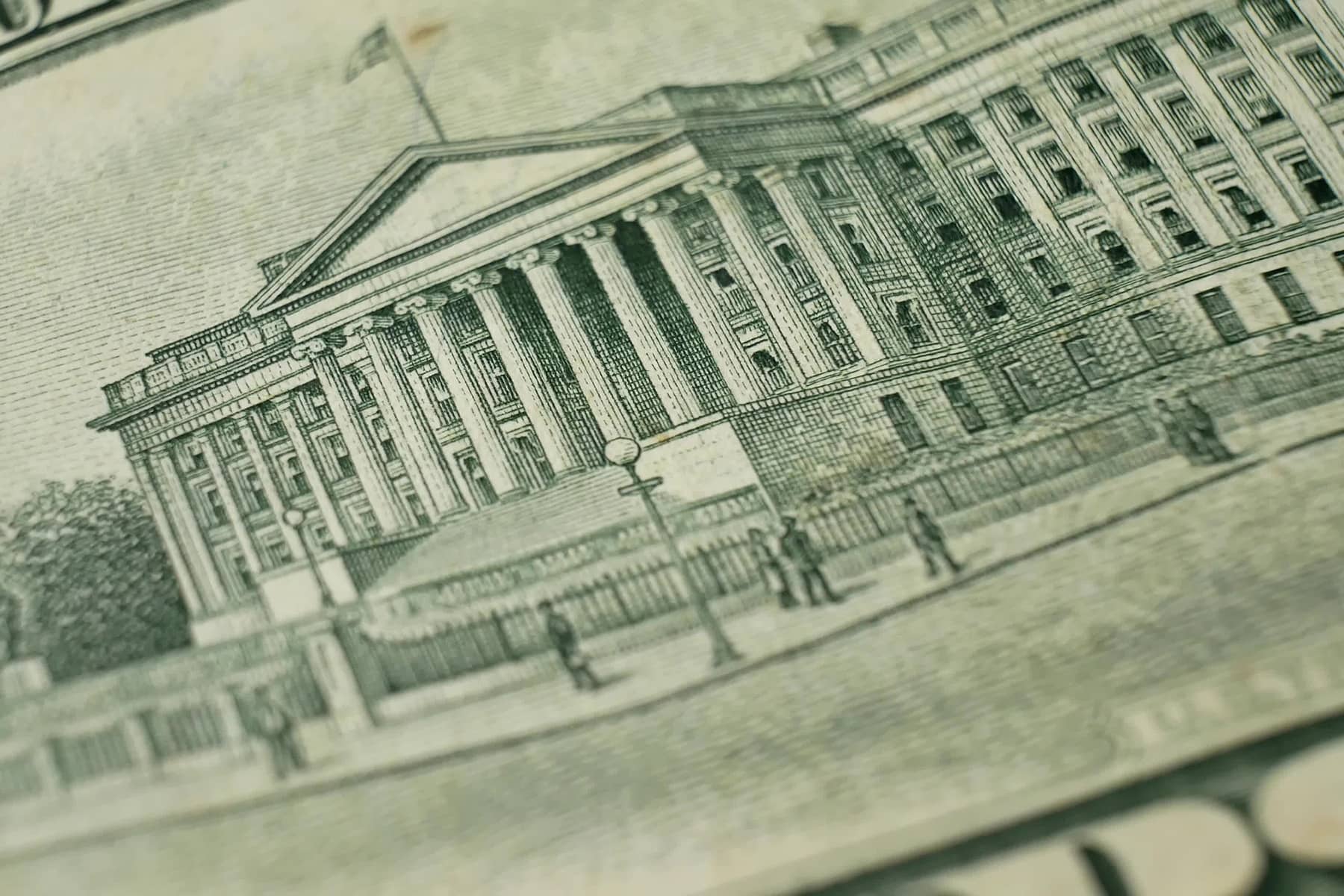
The Senate approved a short-term extension of government funding to prevent a shutdown on September 29. The deal funds the government until December 16 and also provides about $12 billion in aid to Ukraine as it fights off Russia’s invasion. The House is expected to pass the measure tomorrow.
Behind this measure is a potential nightmare scenario. MAGA Republicans have already threatened to refuse to fund the government unless President Joe Biden and the Democrats reverse all their policies. If Republicans take control of either the House or the Senate—or both—in the midterms, they have the potential to throw the government into default, something that has never happened before.
The Republicans have this weapon because the U.S. has a weird funding system put in place more than 100 years ago. Congress appropriates money for programs that the Treasury then has to fund. But there is a “debt ceiling” for how much the government can borrow. If Congress has spent more money than the debt ceiling will permit, Congress must raise that ceiling or the government will default.
The debt ceiling is not an appropriation, it simply permits the government to pay debts already incurred.
Congress actually originally intended the debt ceiling to enable the government to be flexible in its borrowing. In the era of World War I, when it needed to raise a lot of money fast, Congress stopped passing specific revenue measures and instead set a cap on how much money the government could borrow through all of the different instruments it used.
Now, though, the debt ceiling has become a political cudgel because if it is not raised when Congress spends more than it has the ability to repay, the country will default on its debts.
Congress has raised the debt ceiling more than 100 times since it first went into effect, including 18 times under Ronald Reagan, and indeed, the Republicans raised it three times under former president Donald Trump. But when they had to raise it almost exactly a year ago under Biden, Republicans refused.
Treasury Secretary Janet Yellen warned then that a default “could trigger a spike in interest rates, a steep drop in stock prices and other financial turmoil. Our current economic recovery would reverse into recession, with billions of dollars of growth and millions of jobs lost.”
It would jeopardize the status of the U.S. dollar as the international reserve currency. Financial services firm Moody’s Analytics warned that a default would cost up to 6 million jobs, create an unemployment rate of nearly 9%, and wipe out $15 trillion in household wealth.
And yet, Senate minority leader Mitch McConnell (R-KY), who had voted to raise or suspend the debt ceiling 32 times in his career, said, “There is no chance, no chance the Republican conference will…help Democrats … resume ramming through partisan socialism.” His stand was in part because it was not clear he had the votes he needed to support an increase, even though establishment Republicans like McConnell were quite aware of the damage a default would create.
Driving the Republican stance was former president Trump, who pushed MAGA Republicans to use the threat of default to get what they want. “The way I look at it,” he wrote, “what the Democrats are proposing, on so many different levels, will destroy our country. Therefore, Republicans have no choice but to do what they have to do, and the Democrats will have no choice but to concede all of the horror they are trying to inflict upon the future of the United States.” Trump was not happy when McConnell backed down. He issued a statement blaming McConnell for “folding” and added, “He’s got all of the cards with the debt ceiling, it’s time to play the hand.”
Now the equation has changed. With the Republican Party controlled by its MAGA members, it is not clear that a Republican-dominated House or Senate would allow the government to pay its bills. The ranking member of the House Budget Committee, Representative Jason Smith of Missouri, told Alayna Treene of Axios that he thinks the Republican should use the debt ceiling as leverage to “reverse” the administration’s “radical” policies. He indicated he would like the Republicans to pass a bill tying a higher debt ceiling to the destruction of all the Democrats’ policies and dare Biden to reject it. “Surely he wouldn’t default,” Smith said.
This plan is an echo of an effort by former Confederate leaders to destroy the federal government’s Reconstruction policies by withholding funds until the president did as they demanded. In 1879, having taken control of both houses of Congress during a recession, Democrats believed they had a mandate to get rid of federal protection of Black rights.
Insisting they were fighting for liberty from a tyrannical government, they attached to appropriations bills riders that would force President Rutherford B. Hayes either to withdraw the remaining U.S. troops in the South (it is a myth that they left in 1877) or to leave the government unfunded.
Cartoonist Thomas Nast drew an image of Fort Sumter, the installation in Charleston Harbor fired on by Confederate troops in April 1861, with the caption: “REVOLUTIONARY, AS USUAL—It is not the first time that an attempt has been made to stop the Government.” Three weeks later, the cover of Harper’s Weekly showed a skeletal U.S. soldier, starved at the infamous Andersonville prison camp, as a symbol of the starvation of the government.
Southern Democrats told newspapers they had blundered when they fought on the battlefields: far better to control the country from within Congress. Extremist newspapers threatened violence as they called for congress members to “drive or starve Mr. Hayes into signing a bill that sweeps these obnoxious laws out of existence.”
But some fellow Democrats thought the southerners had gone too far. The Chicago Times deplored “the revolutionary course of attempting to subordinate the president to the dominant party in congress by menacing the very existence of the constitution.”
Republican House minority leader James Garfield (R-OH) noted: “They will let the government perish for want of supplies.” “If this is not revolution, which if persisted in will destroy the government, [then] I am wholly wrong in my conception of both the word and the thing.” A Civil War veteran who had seen battle at Shiloh and Chickamauga, Garfield understood revolution.
Garfield and Hayes refused to bow to the ex-Confederates’ demands, and their stand rallied northerners who had begun to drift toward the Democrats back to their standard. The Democrats were engaged in “a conspiracy against the government itself,” Harper’s Weekly wrote, and voters agreed. In the election of 1880, they rejected Democratic presidential candidate Winfield S. Hancock, who had been considered the frontrunner, and instead elected Garfield, who ran on a platform that emphasized a strong national government and defense of Black rights.
In 1879 the congressional fight was a continuation of the themes of the Civil War, played out over the funding of the government. If today’s Republicans retake power in the fall elections, a similar fight in 2023 will likely look much the same.
Аn Mаzhоr and АStudіо
Letters from an Аmerican is a daily email newsletter written by Heather Cox Richardson, about the history behind today’s politics














